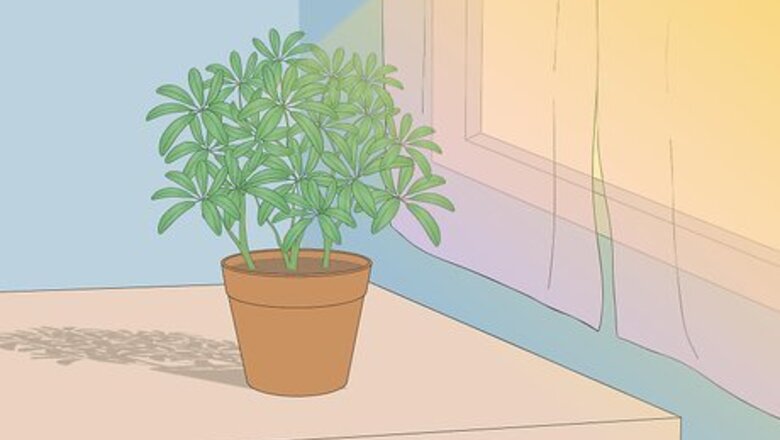
views
Providing the Right Conditions
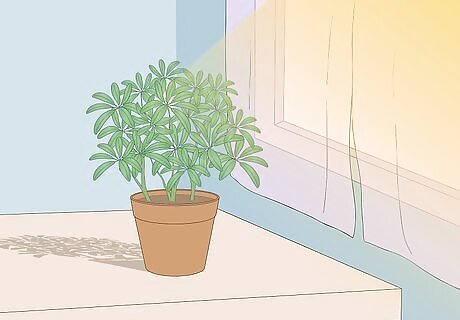
Place the dwarf umbrella plant in a bright location, shielded from direct sunlight. The ideal setting for a dwarf umbrella plant is directly in front of an east, west, or south-facing window. Add a sheer curtain hanging between the plant and window to diffuse the direct sunlight. Another good location is right next to the window where the plant will get very bright but indirect sunlight. Direct sunlight through a window without the curtain to diffuse it, will scorch an umbrella plant’s leaves. When the umbrella plant is not getting enough light, the leaves will turn yellow and drop.
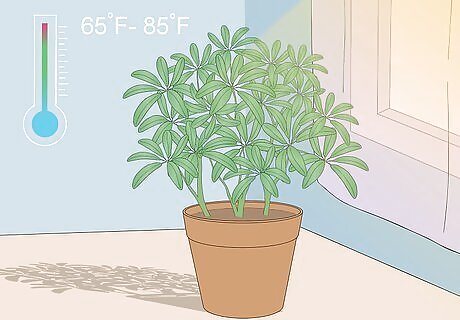
Keep the plant at temperatures between 65 and 85 degrees Fahrenheit. Average room temperatures of 65 to 75 °F (18 to 24 °C) are ideal, although the dwarf umbrella plant will do fine with temperatures up to 85 °F (29 °C). Do not allow the room temperature to drop below 60 °F (16 °C). The edges of the leaves will turn brown when the plant is exposed to temperatures that are too cold. Additionally, do not place dwarf umbrella plants near heating and cooling vents or a drafty door.
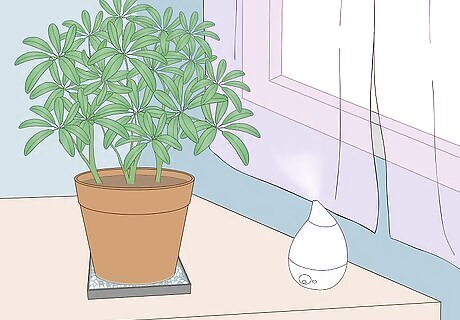
Take the room's humidity levels into account. Average room humidity is usually fine for this plant, but if the house tends to get dry from heating or cooling, mist it each morning with room temperature water. Maintain adequate humidity with a humidifier or a humidity tray, which is a shallow dish or pan filled with pebbles and water. Set the humidity tray below the umbrella plant. As the water evaporates from the tray, the humidity around the plant will increase.
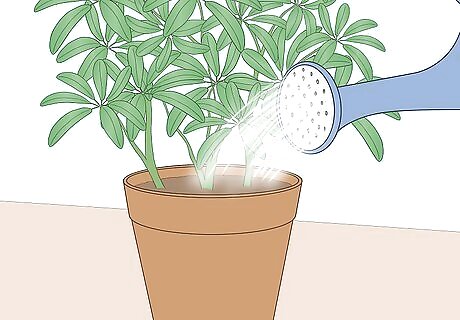
Water the plant when the soil becomes dry, using aged water. Water the dwarf umbrella plant with “aged” water when the potting soil is nearly dry or when the leaves begin to wilt. To age the water, fill the watering container a few days before watering the plant and leave it uncovered. This will allow the chlorine to dissipate and the water will be at room temperature when the plant is watered. This is a tropical plant that can be stressed by fresh, cold tap water. If the leaves become wrinkled, the plant is not getting enough water. If it is being overwatered, the leaves will turn black and drop.
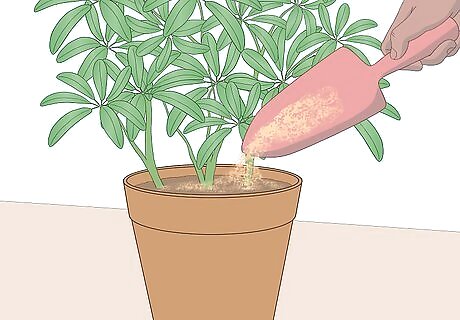
Fertilize your dwarf umbrella plant every two weeks (except during winter). Give the dwarf umbrella plant a balanced houseplant fertilizer that is designed for foliage plants during the spring, summer and fall. A fertilizer ratio of 8-8-8 or 10-10-10 is fine. Use a liquid, water-soluble fertilizer mixed at half the rate recommended by the manufacturer. A common half-strength dilution rate is about ½ teaspoon of fertilizer per gallon of water, but this varies. Pour the fertilizer solution evenly over the potting soil every two weeks immediately following a regular watering. Do not give the umbrella plant fertilizer before watering it as this could burn the roots. Fertilizer should not be given to the plant in the winter. The plant grows very slowly during the winter season and will not utilize the fertilizer.
Re-potting, Pruning and Pest Control
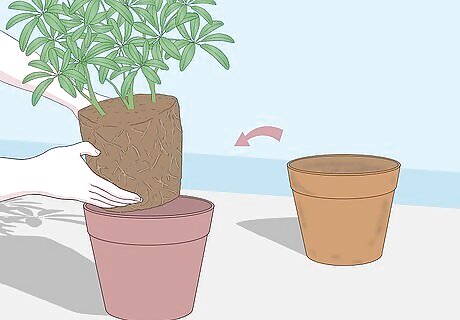
Repot the dwarf umbrella plant when it seems to be growing slowly and the container is full of roots. Repot it into a container with drains holes in the bottom that is only one size larger than its current pot. Pour 1 to 2 inches (2.5 to 5.1 cm) of peat-based potting mix into the new container, turn the umbrella plant on its side and gently slide it out of its old container. If the roots are sticking to the side of the container, run a butter knife around the inside of the container to loosen them. Set the umbrella plant into the container and finish filling it with potting mix. Water it generously with aged water to help settle the soil around the roots.
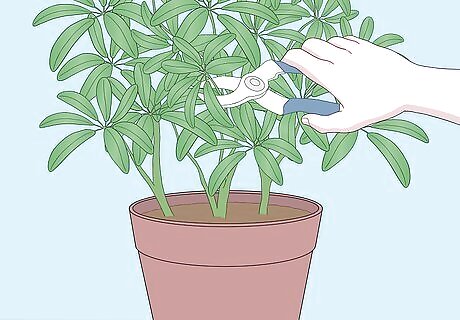
Prune the dwarf umbrella plant only when necessary to control its size. Use sharp scissors or bypass hand pruners to cut the stems right above a leaf. New leaves and stems will grow from just below the pruning cut.
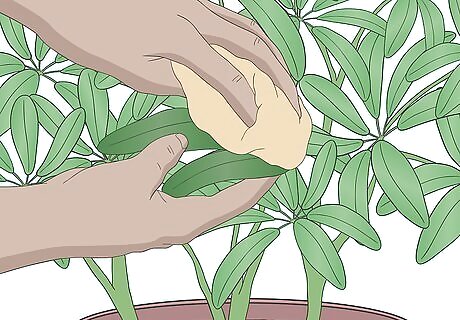
Keep the leaves clean to prevent spider mites. Wipe the leaves off with a damp sponge and clear, room-temperature water when they get dusty. Dirt and dust on the leaves block the light and provide a suitable environment for spider mites.















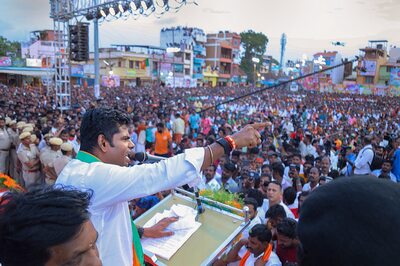




Comments
0 comment